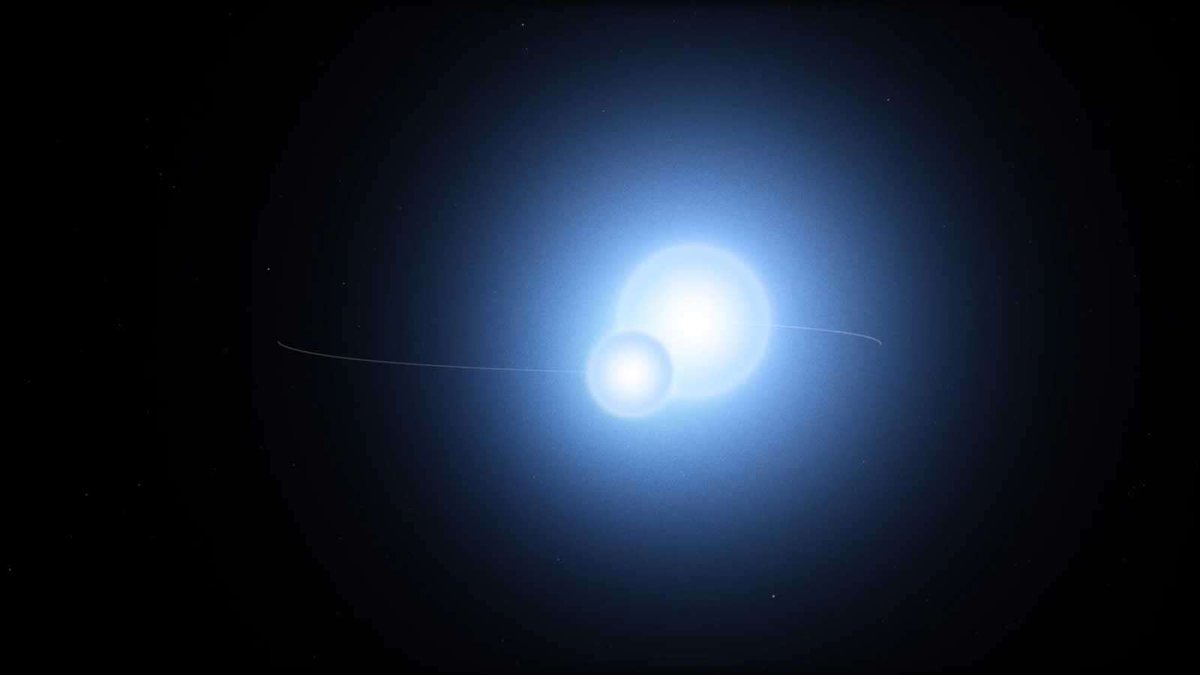Astronomers have found the coolest star system ever: A sextuple system with three nearly identical pairs of binary stars orbiting each other that we see edge-on so all six stars undergo mutual eclipses from every few hours to a few days.
I mean. What. https://www.syfy.com/syfywire/cool-six-star-system-found-cooler-made-of-three-binaries-coolest-eclipsing-binaries
I mean. What. https://www.syfy.com/syfywire/cool-six-star-system-found-cooler-made-of-three-binaries-coolest-eclipsing-binaries
2/ I go through all the details in the article linked in the first tweet, so please click it. CLIIIIIIIICK IT. Your day will be better, if slightly more confusing. It's a little a lot, as my friend @ARealGirl says. But so so cool.
3/ I love this so much. It's three pairs of binary pairs, each with two stars orbiting each other. Then two of those pairs orbit each other, and the third pair orbits those. That's already weird, but then
4/ in each pair the most massive star is about 1.5 times the Sun's mass, and the lower mass star is about 0.6 times the Sun's mass. So all three pairs look very similar: They're fraternal triplets!
5/ And, AND, we see *all three* binary orbits edge-on, so in each pair we see the stars pass in front of each other, star A blocking star B, then B blocking A a half-orbit later. They're all eclipsing binaries! That's really important.
6/ The eclipses tell us a lot about the stars, and together with spectra taken show us their masses, sizes, temperatures, orbits, and more. It's the jackpot of multiple star systems. We won the sextuplottery!
7/ OK yeah I know I immediately regretted tweeting that. Still, this is A Big Deal, and will help us understand how multiple systems are born and evolve. Plus, c'mon, six stars all mutually orbiting each other. It's like science fiction.
8/ Literally. Star Trek: Picard had an episode on an 8-star (octonary) system that gave me a chance to write all about this kind of thing, and it's pretty similar to this one.
8.5/ And deep cut for "Salvation" fans, I also get to mention TESS and use a photo of @SantiagoC in today's article too, so I couldn't resist. Different TESS, but hey. A joke's a joke.
Attn: @jennigan and @SalvationWrtrs
Attn: @jennigan and @SalvationWrtrs
9/9 The Universe is an amazing place, and the deeper we look, the more we find out about it, the amazinger it gets. Stuff like this gives me a burst of joy just knowing it exists.
And the fact that we can *understand* it?
<chef's kiss> https://www.syfy.com/syfywire/cool-six-star-system-found-cooler-made-of-three-binaries-coolest-eclipsing-binaries
And the fact that we can *understand* it?
<chef's kiss> https://www.syfy.com/syfywire/cool-six-star-system-found-cooler-made-of-three-binaries-coolest-eclipsing-binaries

 Read on Twitter
Read on Twitter




